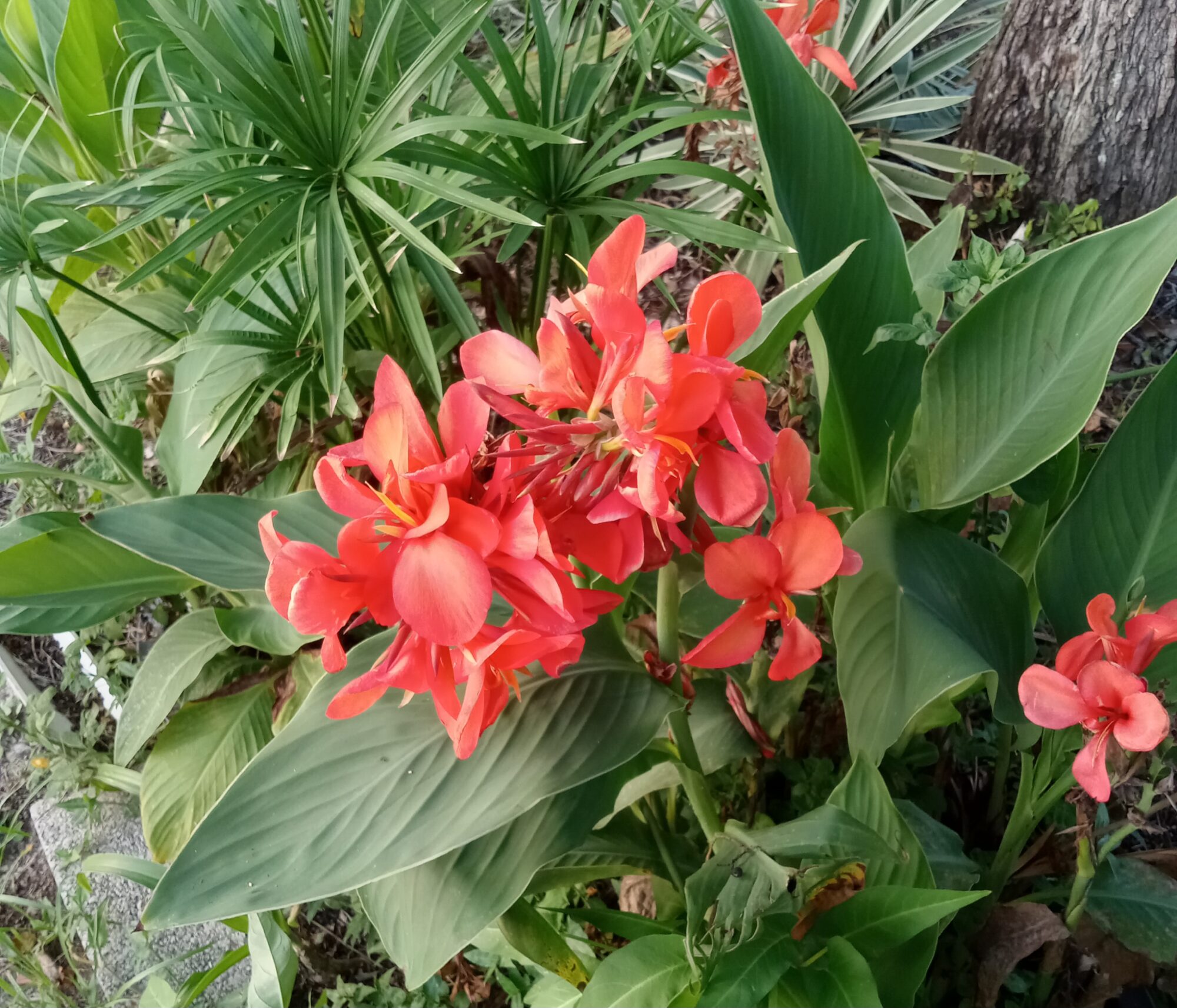Uses: Edible, Fodder, Cleans Wastewater Native to: Tropical Americas
Canna Edulis: Exploring the Culinary Delights of the Edible Canna Lily
One fascinating plant is Canna edulis, commonly known as the edible canna lily. While most people are familiar with the ornamental varieties of canna lilies, few are aware of the culinary potential of this remarkable plant. We have personally eaten Canna edulis and Canna indica, and have suffered no ill effects. We have fed cannas to rabbits and ducks, and they seem to enjoy it
Origins and Distribution:
Canna is a perennial plant native to the tropical regions of the Americas, particularly Central and South America. It belongs to the Cannaceae family, which includes approximately 19 species of canna lilies. Cannas are members of the larger ginger family. Historically, Canna edulis has been cultivated for its starchy rhizomes, which serve as a valuable food source in many cultures.
Contrary to popular belief, cannas are found on the edges of bogs and swamps. They are one of the few plants that do not prefer well drained soil, though they are usually higher on the bank than cattail. Cannas and taro will grow in the same niches, indeed the two complement one another very well.
Nutritional Value:
The edible canna lily offers a range of nutritional benefits, making it a valuable addition to any diet. The rhizomes of Canna edulis are rich in carbohydrates, dietary fiber, and essential minerals such as potassium, phosphorus, and calcium. They also contain significant amounts of vitamins A and C, as well as antioxidants that contribute to overall health and well-being.
Culinary Uses:
Cooking and Baking: The rhizomes of Canna edulis can be cooked and used in various culinary preparations. They can be boiled, steamed, or roasted, and then mashed or sliced to be used as a side dish or incorporated into soups, stews, and curries. The starchy texture of the rhizomes makes them an excellent substitute for potatoes or other root vegetables in recipes.
Flour and Starch: The dried and ground rhizomes of canna can be processed into flour or starch, which can be used as a gluten-free alternative in baking. The flour can be used to make bread, cakes, cookies, and other baked goods, while the starch can be used as a thickening agent in sauces, gravies, and puddings.
Fermentation: In some cultures, the rhizomes of Canna edulis are fermented to produce a traditional alcoholic beverage. The fermentation process breaks down the starches into sugars, which are then converted into alcohol. This beverage is often enjoyed during festive occasions and celebrations.
Medicinal Uses: Apart from its culinary applications, Canna edulis has also been used in traditional medicine for its potential health benefits. It is believed to possess anti-inflammatory properties and may aid in digestion, alleviating gastrointestinal issues. However, further scientific research is needed to validate these claims.
Cultivation and Harvesting:
Canna edulis is a relatively easy plant to cultivate, requiring a warm and humid climate. It thrives in wet to well-drained soil and prefers partial shade to full sun. The plant can be propagated through rhizome division or by planting seeds. Harvesting typically takes place when the plant reaches maturity, usually after 9 to 12 months. The rhizomes are carefully dug up, cleaned, and prepared for culinary use.
Here is an excellent on-farm discussion about how to cook up canna starch.
Canna edulis, the edible canna lily, is a remarkable plant that offers both aesthetic beauty and culinary versatility. From its origins in the tropical regions of the Americas to its nutritional value and various culinary uses, this plant has much to offer. Whether used as a staple food source, a gluten-free alternative, or a traditional fermented beverage, Canna edulis continues to captivate cultures around the world. So, the next time you come across a canna lily, remember its hidden potential as a delicious and nutritious addition to your culinary repertoire. Or think about hybridizong canna for your area using techniques like those described in Zero Input Agriculture.
